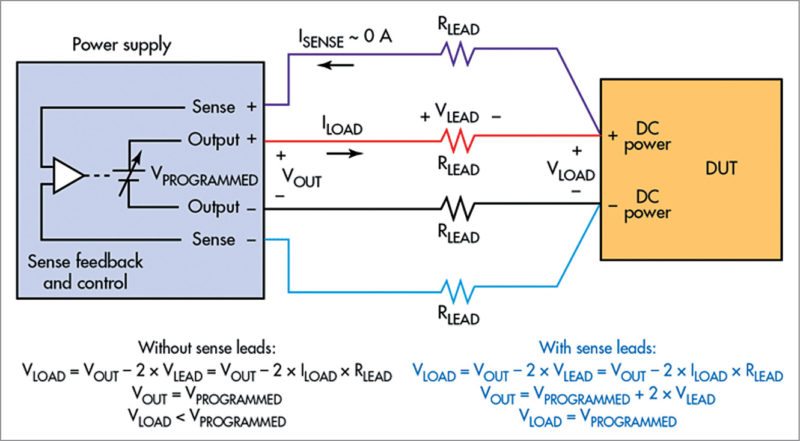The term bench brings about a mental image of a DC power supply used on an engineer’s or a technician’s bench for innumerable power tasks. These might be variable DC bench power supplies that appear to be relatively simple instruments, but engineers rely on these to deliver stable, precise and clean voltages and currents, regardless of load.
To identify the appropriate bench power supply for a particular application, one must come up with answers to several important questions and understand the basics of how power supplies are specified. We have to consider the following points to save substantial time and money later in the system configuration process.
Power, voltage and current requirements for device under test
Different types of power supplies can have different power envelopes (Figs 1a, b and c). In a rectangular power envelope type of supply, any load current can be supplied at any voltage level.
Another type has multiple rectangular envelopes for multiple ranges that offer the option of higher values of one parameter at the expense of the other.
Then there are those that can deliver a hyperbolic envelope that provides a more continuous transition than multi-range power supplies. In this kind of supply, one parameter is inversely proportional to the other.
High-power output supplies tend to have either a multi-range or a hyperbolic envelope. To make the right selection, take the time to evaluate the power levels required by the application.

Parameters to be considered
Although many key power supply parameters will vary depending on each application, following parameters are critical in all cases:
Accuracy. It determines how close the regulated parameter is to its theoretical value. Output uncertainty is largely due to error terms in case of a digital-to-analogue converter (DAC). Setting accuracy is tested by measuring the regulated variable with a traceable, precision measurement system connected to the power supply’s output. It is given as ±(% of setting + offset).
Resolution. It is the smallest change in voltage or current settings that can be selected on the power supply. The resolution specification limits the number of settable discrete levels. A DAC with more bits produces finer resolution. But, with corrections for offset and gain errors, resolution will be less than the number of bits in the DAC. Setting resolution may be expressed as an absolute unit value or as a percentage of full scale.
Readback accuracy. It determines how close the internally-measured values are to the theoretical value of the output voltage (after setting accuracy is applied).
Readback resolution. It is the smallest change in internally-measured output voltage or current that is discernible by the power supply. It is usually expressed as an absolute value, but can also be given as a percentage of full scale.
Stability. A power supply’s performance inevitably changes due to aging. Maintaining long-term stability demands regular verification and calibration.
Temperature stability. Power supply accuracy is usually specified over a temperature range, often between 20°C and 30°C.
Load regulation. It is a measure of the ability of the output voltage or output current to remain constant during changes in the load. This familiar format is easy to understand and verifiable through testing. It is given as ±(% of setting + offset).
Line regulation. It is a measure of the ability of the power supply to maintain its output voltage or output current while its AC line input voltage and frequency vary over the full allowable range. This offers a worst-case picture, which is given as ± (% of setting+ offset).
Direct-current power supplies do not actually produce perfect DC outputs. Output AC noise and transient response change both load and settings. Some of the AC characteristics are described below.
Ripple and noise. Spurious AC components on the output of a DC supply are also often referred to as periodic and random deviation (PARD).The term ripple refers to periodic AC on the output. When viewed in frequency domain, ripple shows up as spurious responses. Unlike ripple, noise is random. Noise covers a broad spectrum, and when viewed in frequency domain, manifests itself as an increase in the baseline.
Transient response. It is tested by applying significant step changes to load impedance and power supply settings, and measuring the time to settle to a stable DC value.

Required output accuracy level
It is important to review the power supply’s output accuracy and read-back specifications in case of accurate control of voltage at the load for research experimentation or device characterisation.











